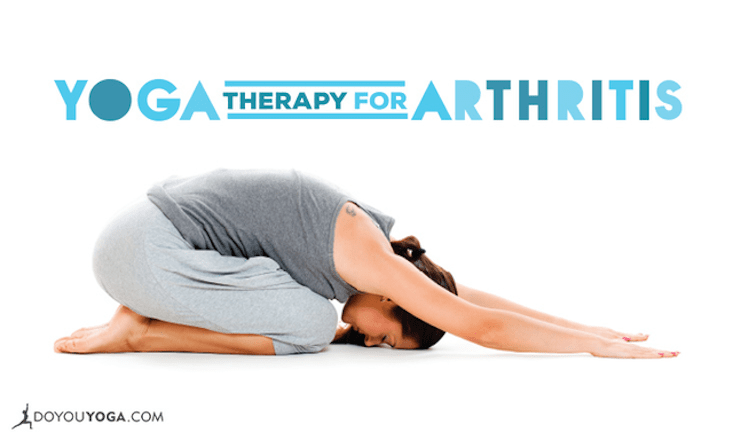Arthritis is a condition causing joint disease or joint pain, leading to inflammation, stiffness, and loss of mobility in the joints.
If you are suffering from arthritis or have a student who is, you'll know how much this can affect one's life. So it's useful to know what yoga could do, and how you could modify your yoga practice.
Benefits of Yoga for Arthritis
Arthritis generates swelling, pain, and stiffness in the joints. This decreases the range of motion in the body, and can seriously limit the daily activities. To ease the symptoms of arthritis, yoga can definitely contribute.
Regular yoga practice can help with many of the symptoms of arthritis, such as improve the joint mobility, reduce pain, and help with managing stress and anxiety. But as with any new practice, it is good to consult with your doctor first before starting.
How to Choose A Yoga Style
For people with arthritis, it may not be beneficial to jump into a Vinyasa or Ashtanga class, but choose an asana class which is more calm in nature, and which allows space for modification and the use of props.
The slow pace of Yin yoga brings the stretch into the connective tissues and the joints, which can bring great relief. Iyengar yoga uses various props which can be easily modified to match special needs. Otherwise, you can try a gentle Hatha yoga class or a restorative yoga class, and don't be afraid to ask for help from the teacher.
Yoga Poses for Arthritis
The key in yoga poses for arthritis is to bring more fluidity and flexibility into the joints, to stretch and relieve the joints, and to strengthen the muscles around the joints to give more overall stability. Slow and controlled movements are the way to go, and try to keep on moving the body to avoid further stiffness from inactivity.
1. Cat and Cow Pose
 Image/Yogini Credit: Anna Coventry
Image/Yogini Credit: Anna CoventryThe cat and cow sequence is beneficial for the spine, but also gives the wrist a little bit of pressure. You can come to your hands and knees, and move your spine from cat to cow pose slowly. Finish off with some wrists circles to release and move the wrist joint. If you cannot place any pressure on your wrists, take two blocks and rest your elbows on the blocks to free the hands.
2.Child's Pose
For relieving back pain and calming the mind, spend some time in Child's pose. Keep your hands straight on the mat, or folded under your forehead. For more ease on the legs and knees, you can bring a pillow or a bolster between your buttocks and calves. This will allow you to rest even more in the pose.
3. Tree Pose
When we place all weight on one leg at a time, this tones and strengthens the muscles and joints in the standing leg. It will also strengthen the knees and hip joints, and improve your balance.
Keep your toes on the ground for better balance, and only lean the heal on the standing leg. Or you can place your foot on the shin of the standing leg. You can keep your arms in Anjali Mudra close to your chest, or lift them up either palms touching, or arms wider apart.
4. Cow Face Pose
This pose is good for stretching the arms and shoulders, as well as the spine and hip joints. If the legs can be included in the full pose, it can also help with blood circulation to the knees and ankles. This helps to lubricate your joints, relieving pain and swellings.
If your knees are hurting, you can sit cross-legged, and additionally sit on a block to elevate the hips. If you cannot make your arms touch behind your back, you can use a belt to hold on to with both hands. Remember not to use force!
5. Bridge Pose
The Bridge pose is great for opening the hips and spine and relieving any stiffness in this area. If you have injuries or pain in the neck, it's best to avoid this pose.
Lie on the floor with your feet flat, knees pointing up, arms next to you. While exhaling, lift up the hips while keeping the shoulders and head on the floor. You can walk your hands under your body and interlace your fingers, if this feels possible.
Tips and Contraindications
If your joints feel particularly painful, it's best to avoid stretching or exercising them until the pain resides. If you feel pain in any of the yoga movements, you should modify the pose or come out of it altogether.
Trying to fit a yoga practice in our daily life brings not only physical benefits, but also mental benefits. Yoga can help with the ways we deal with pain, and show us a new way to finding our calm.
Has yoga been therapeutic for your aches and pains? Share your story in the comment section!






